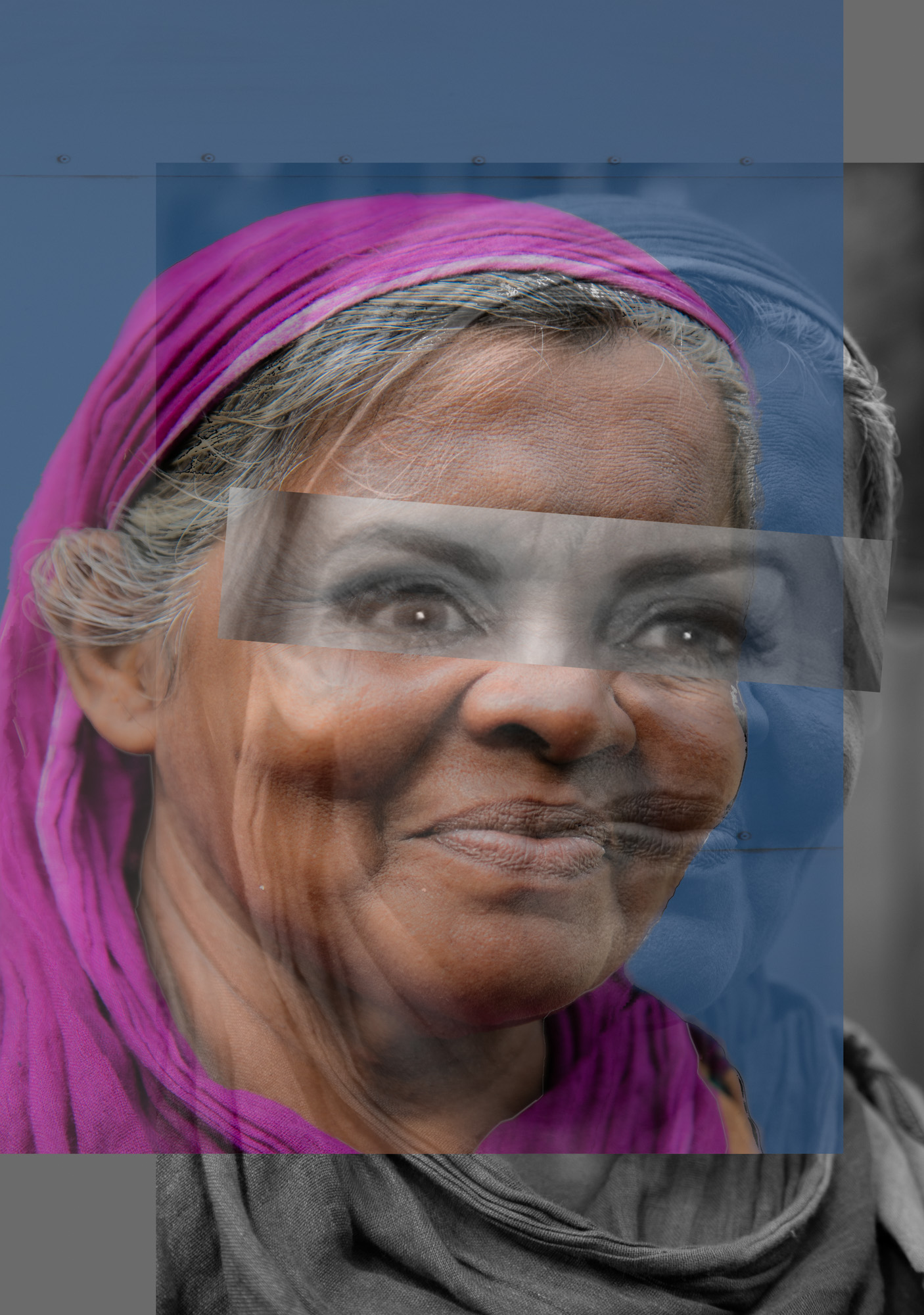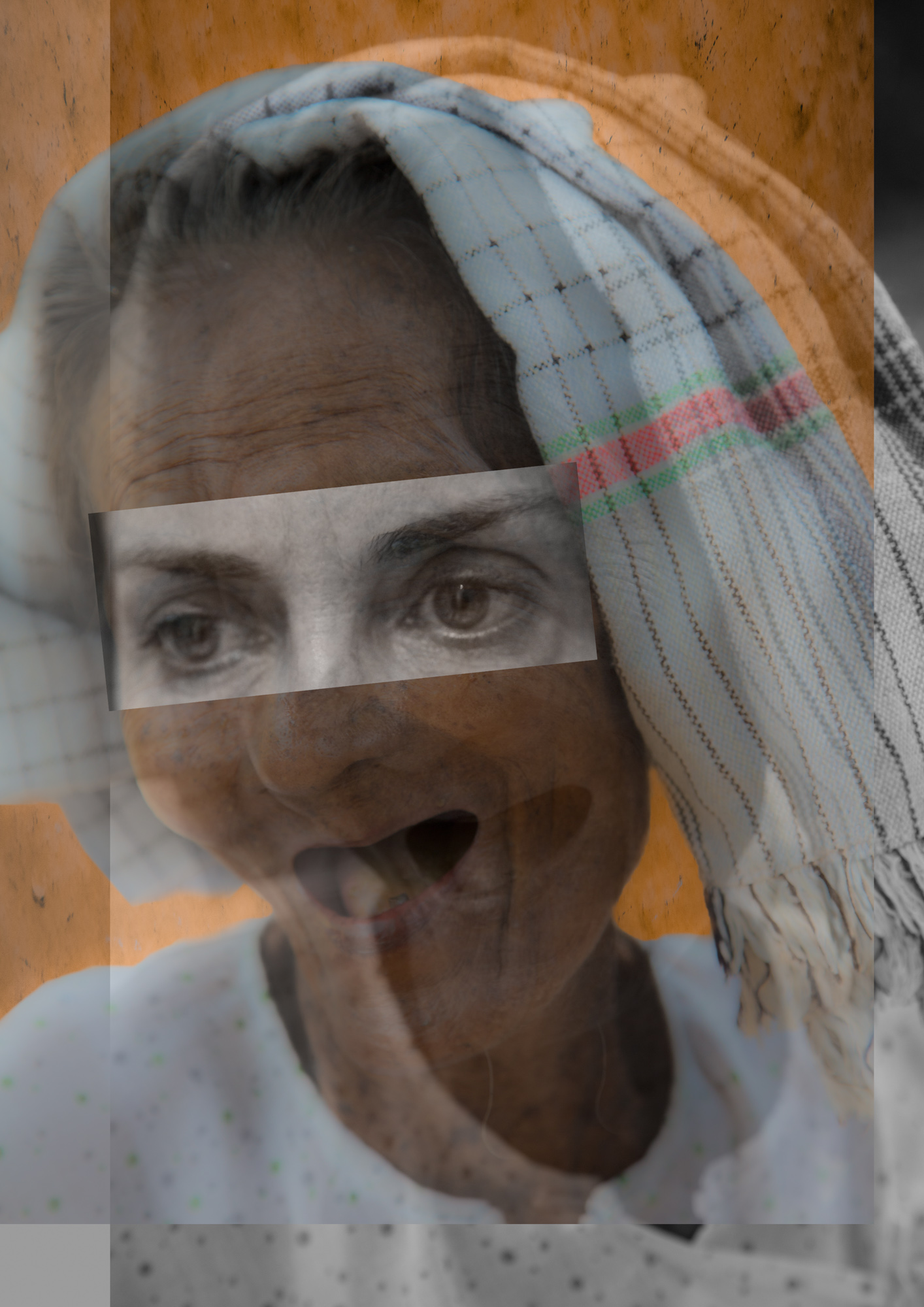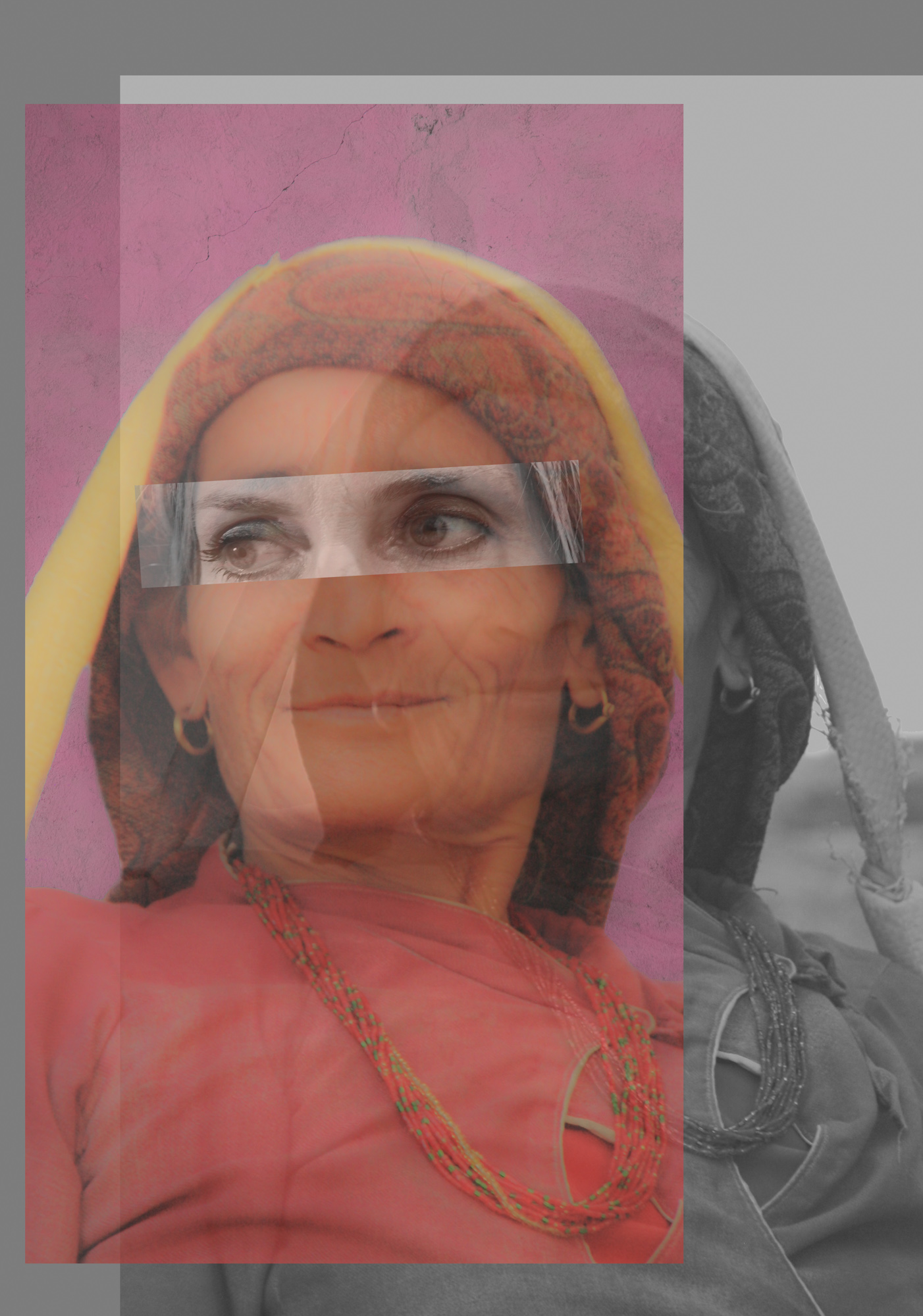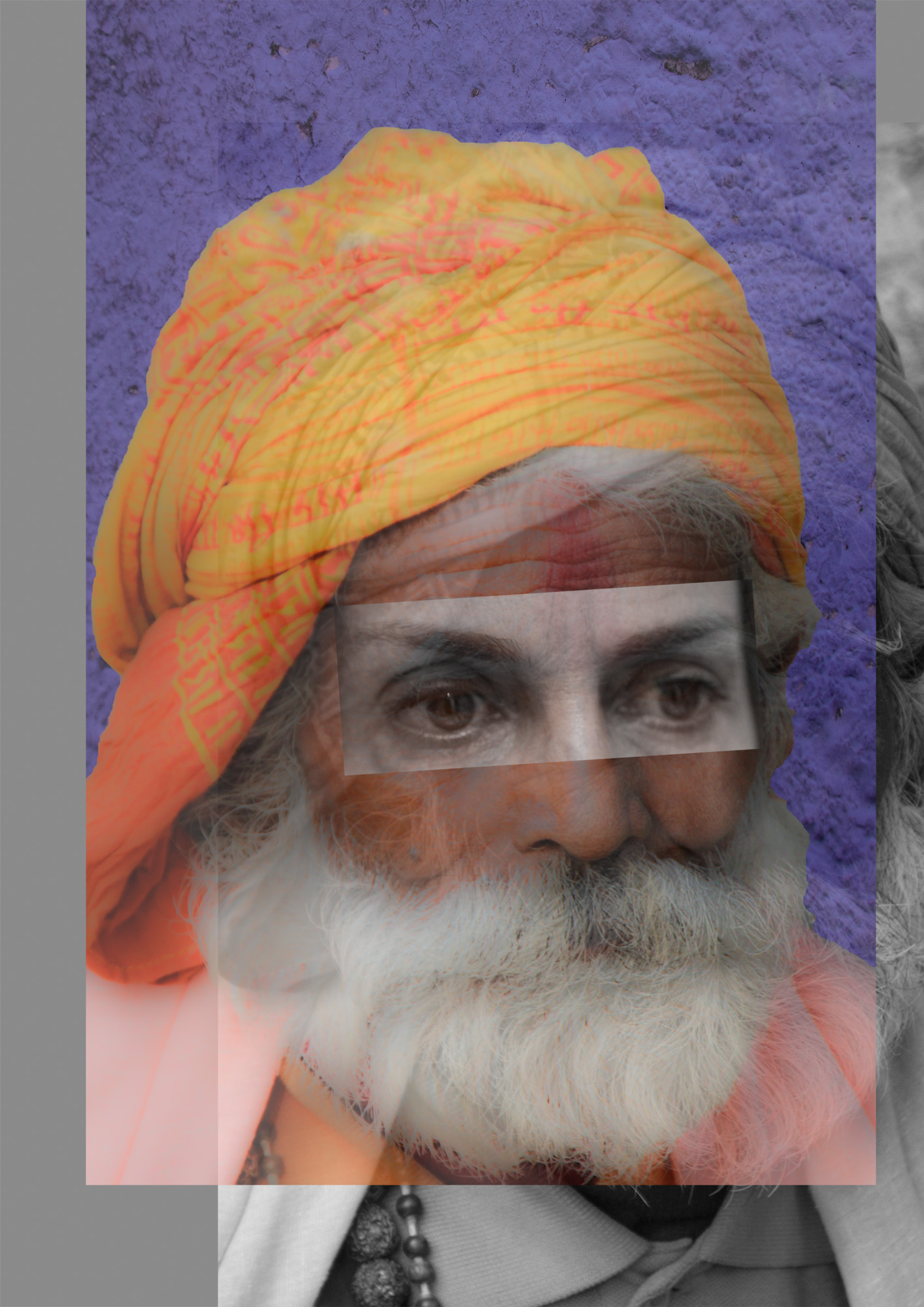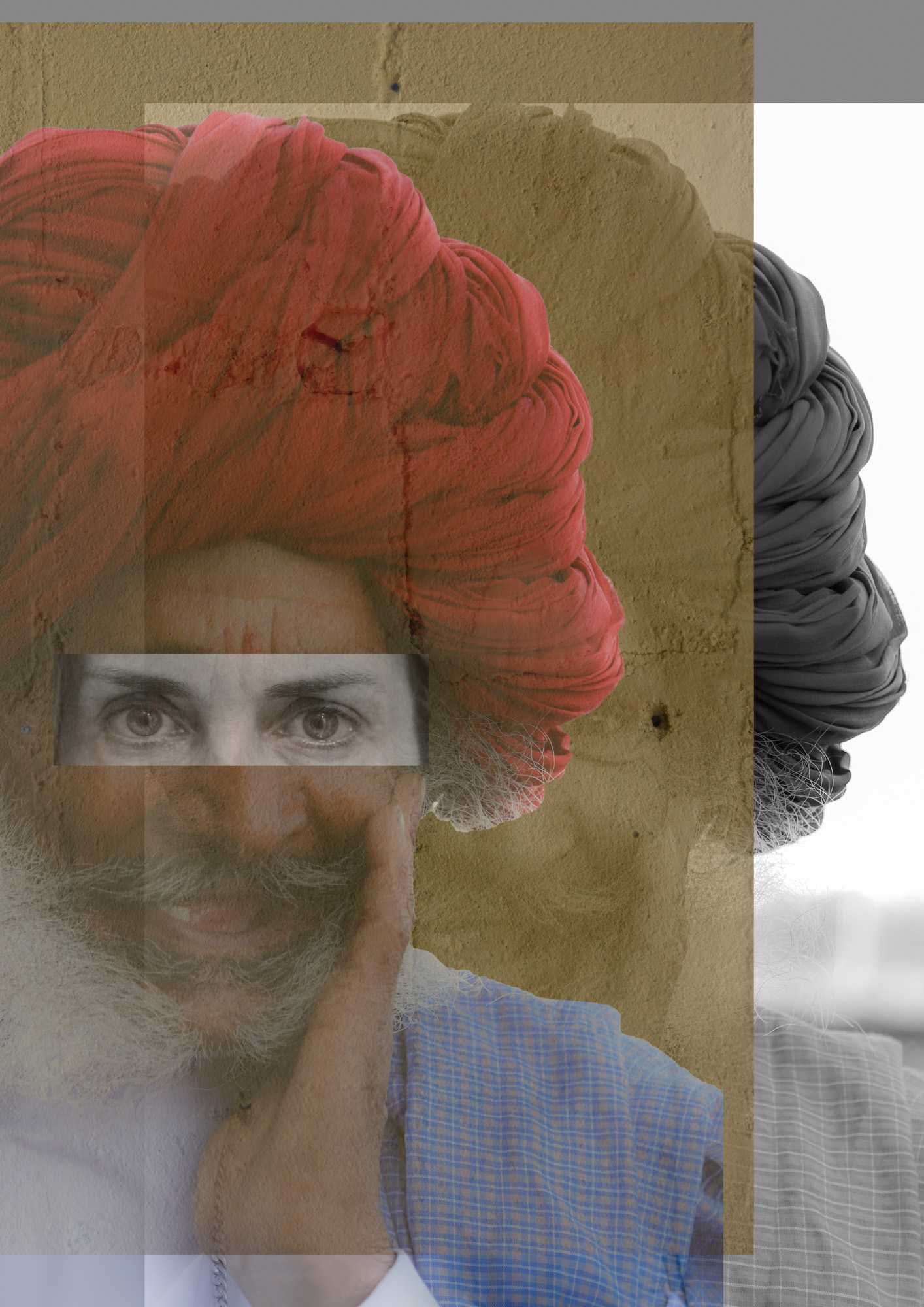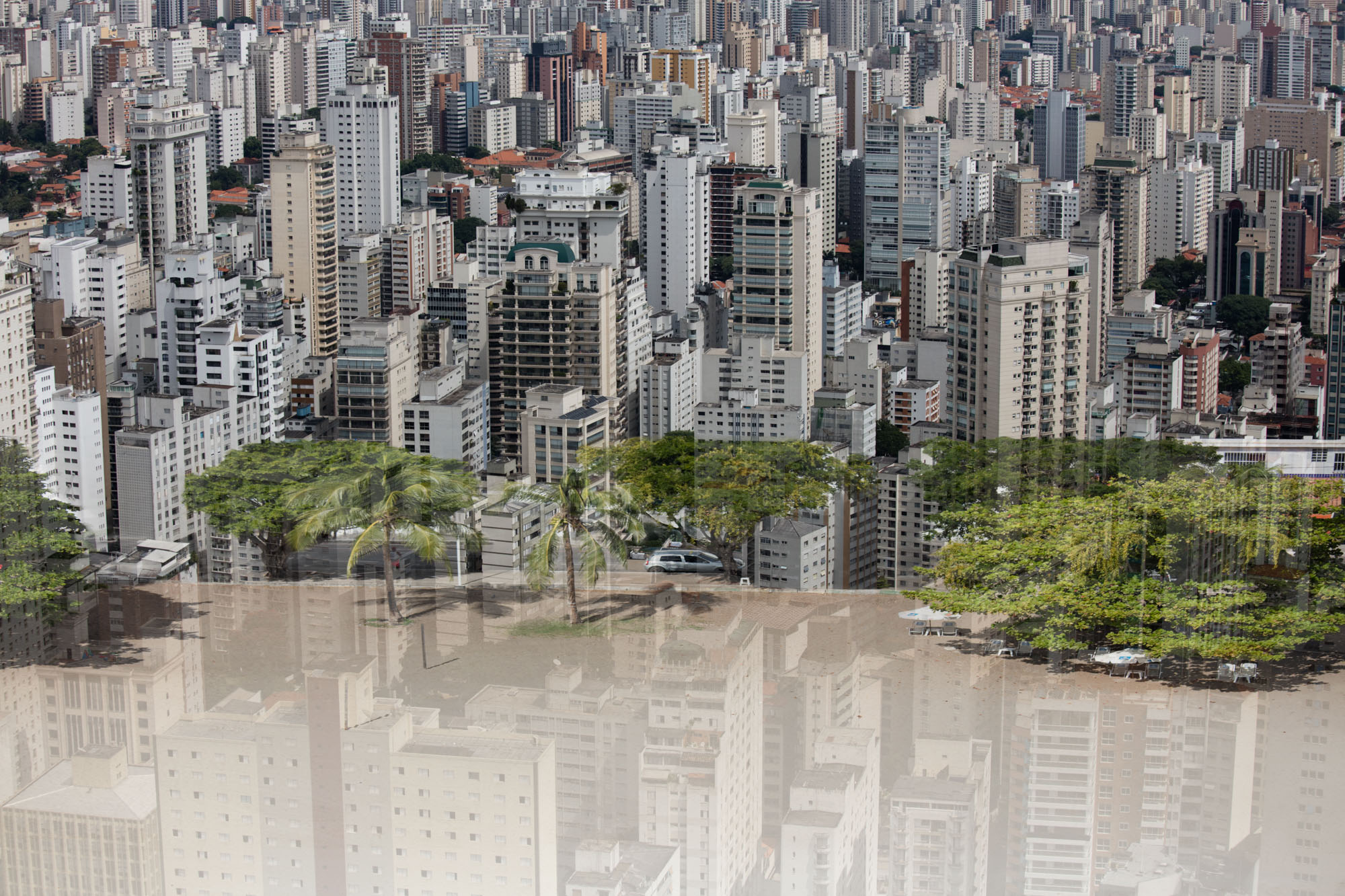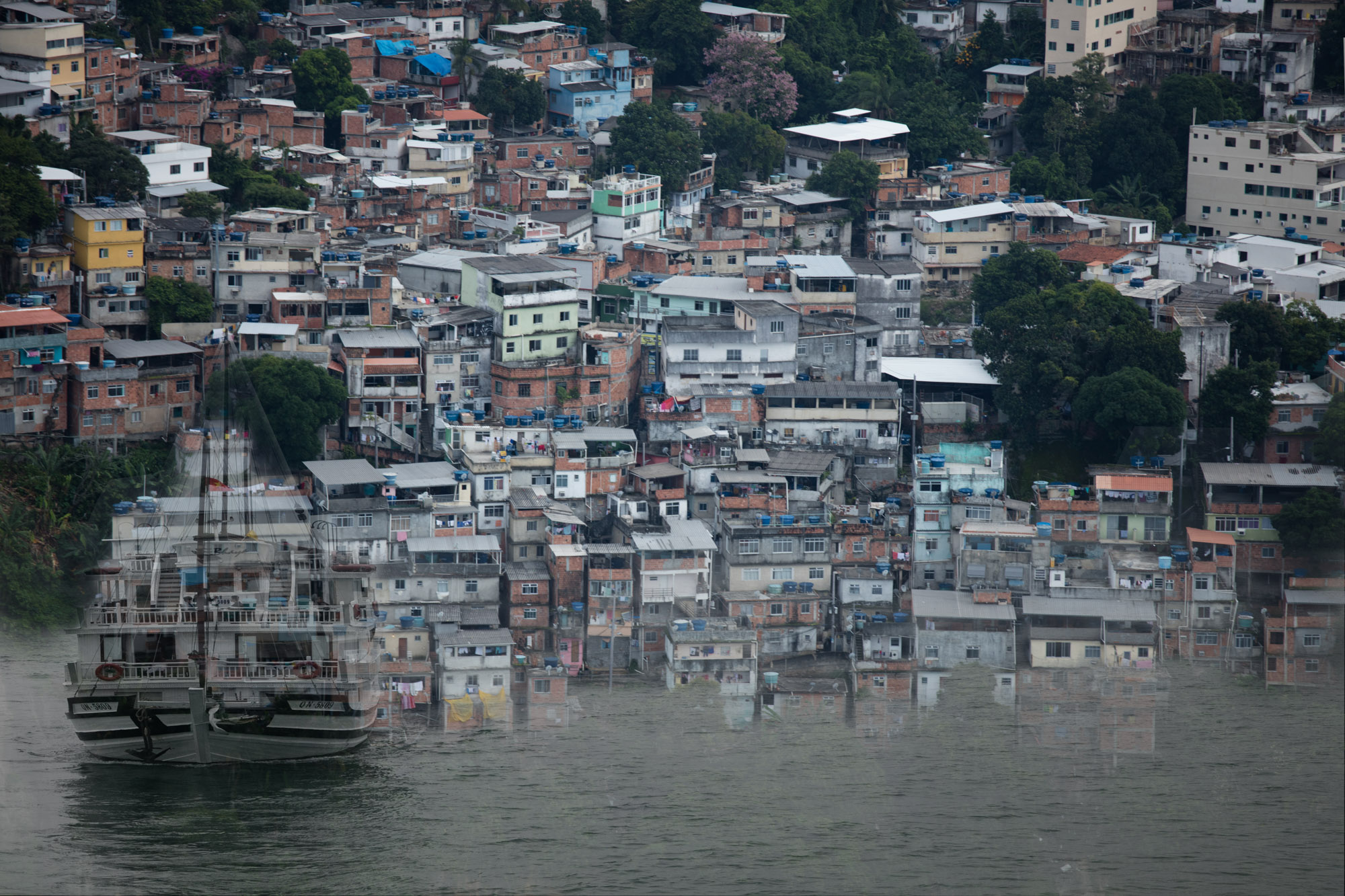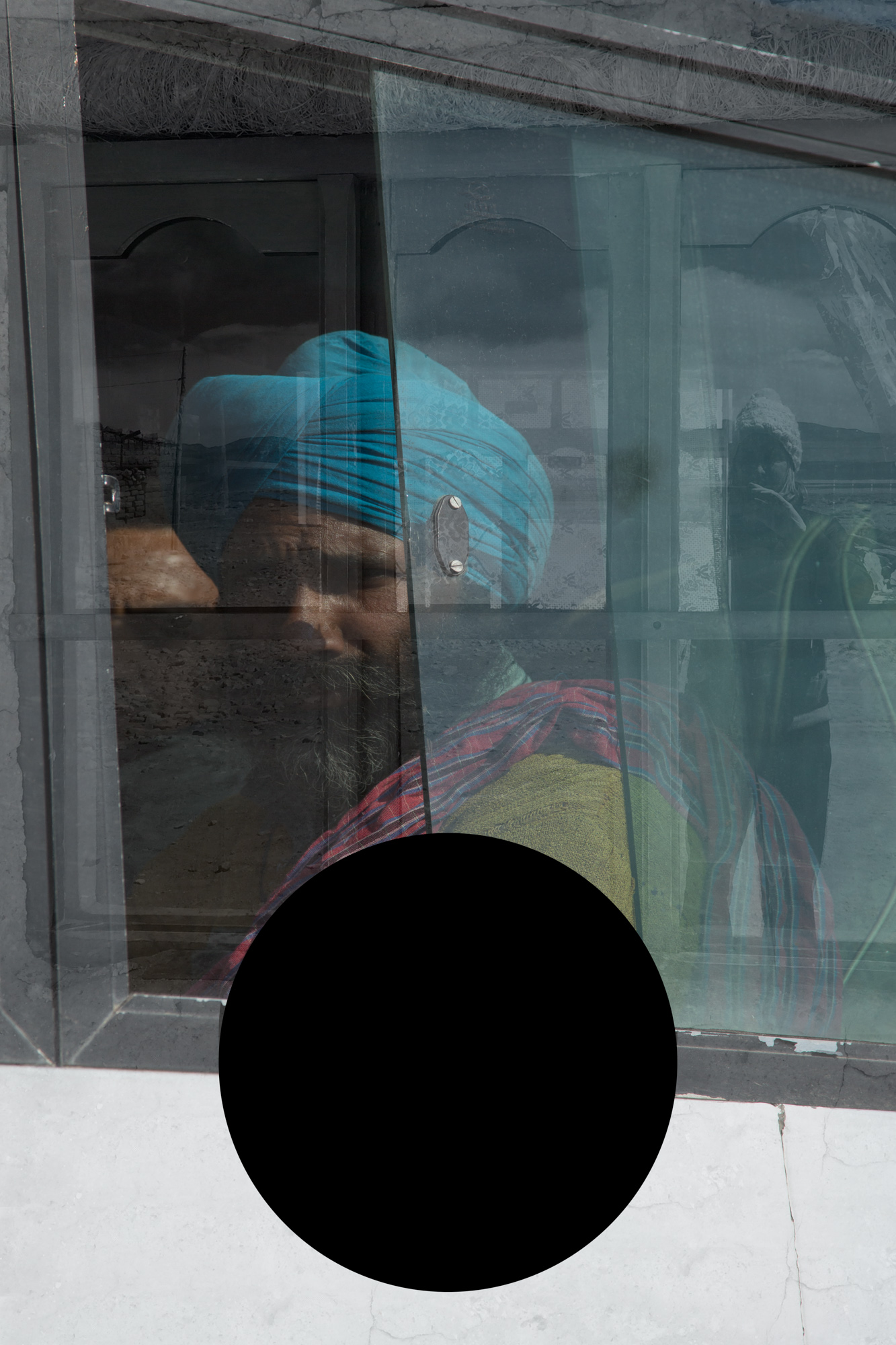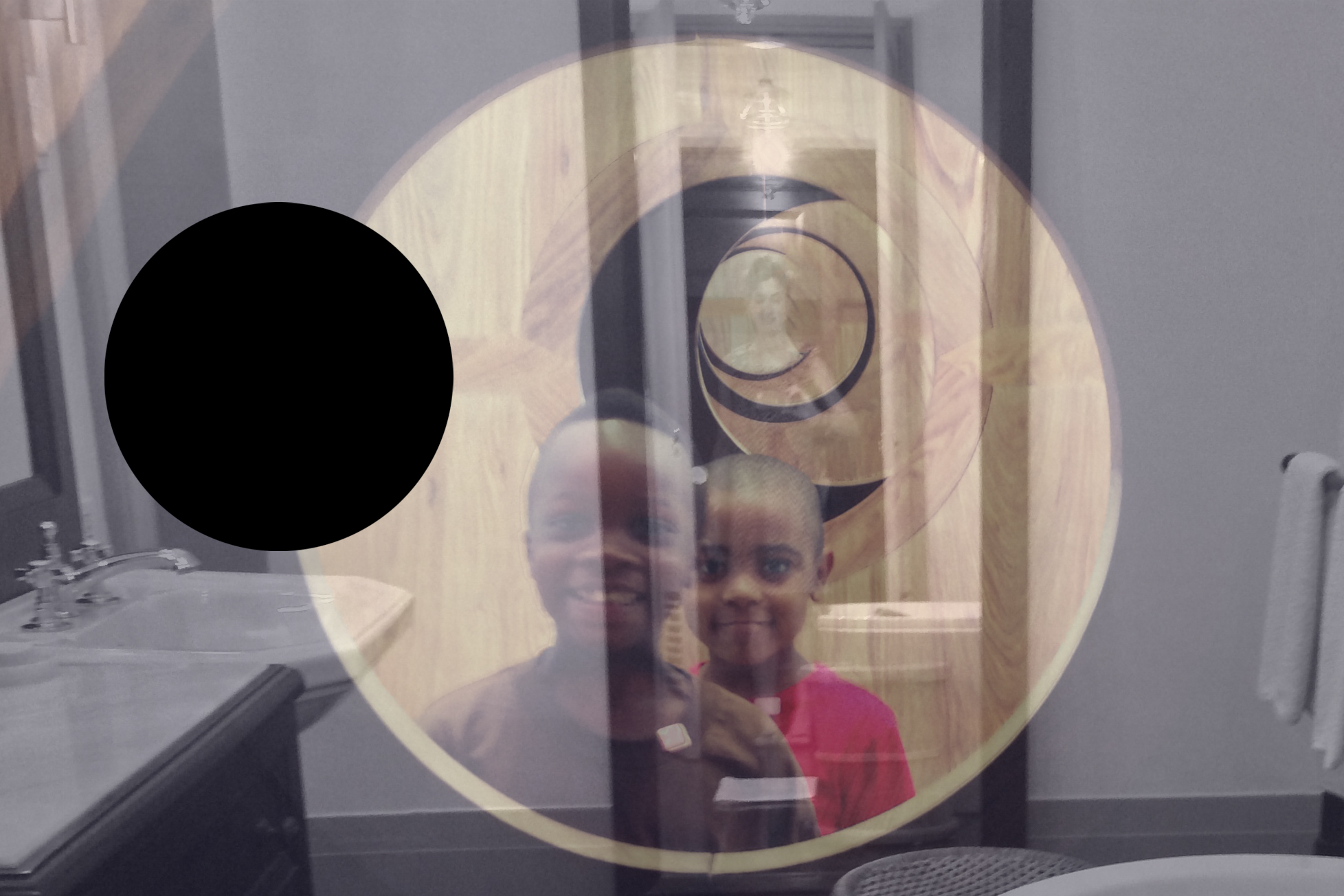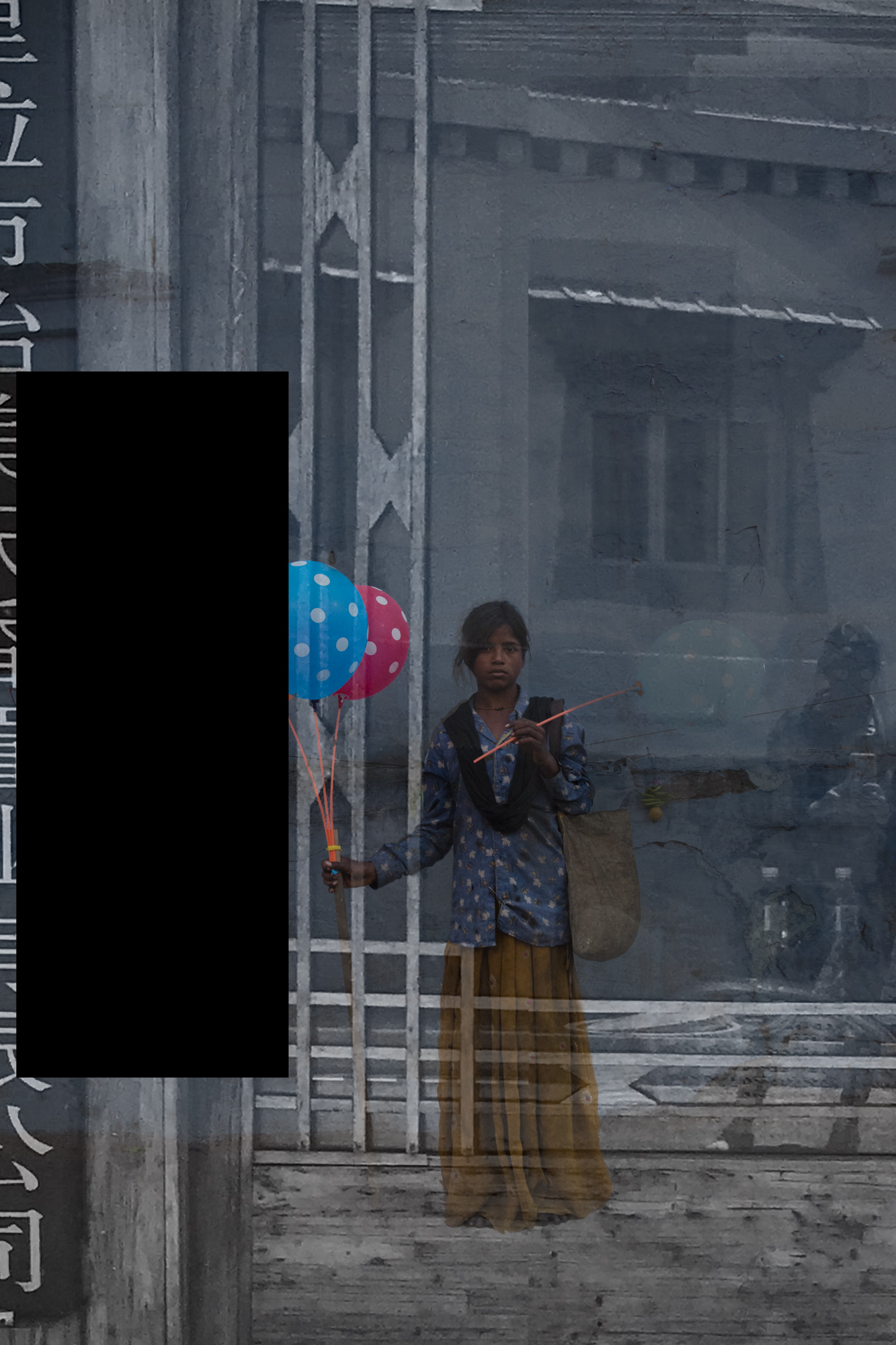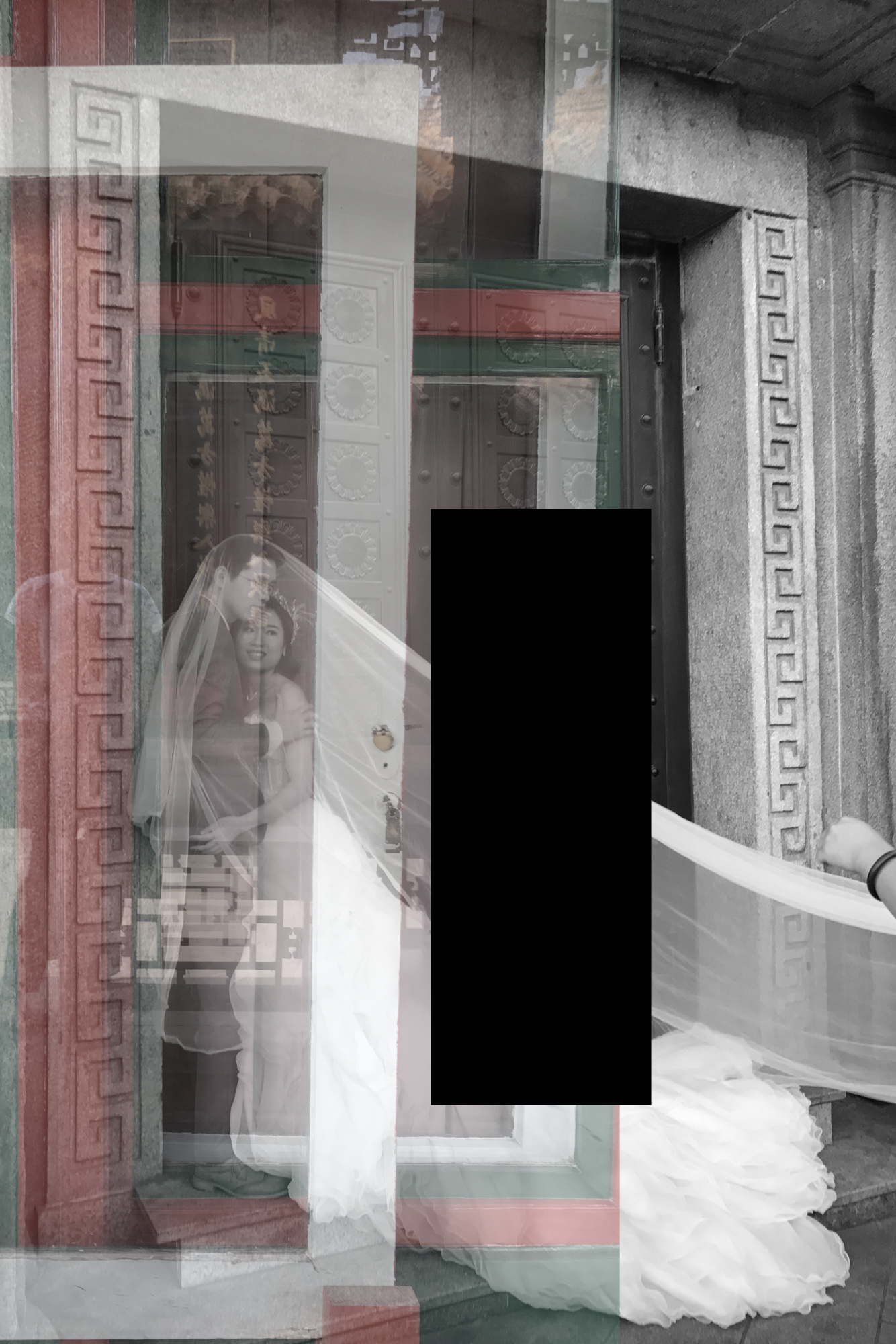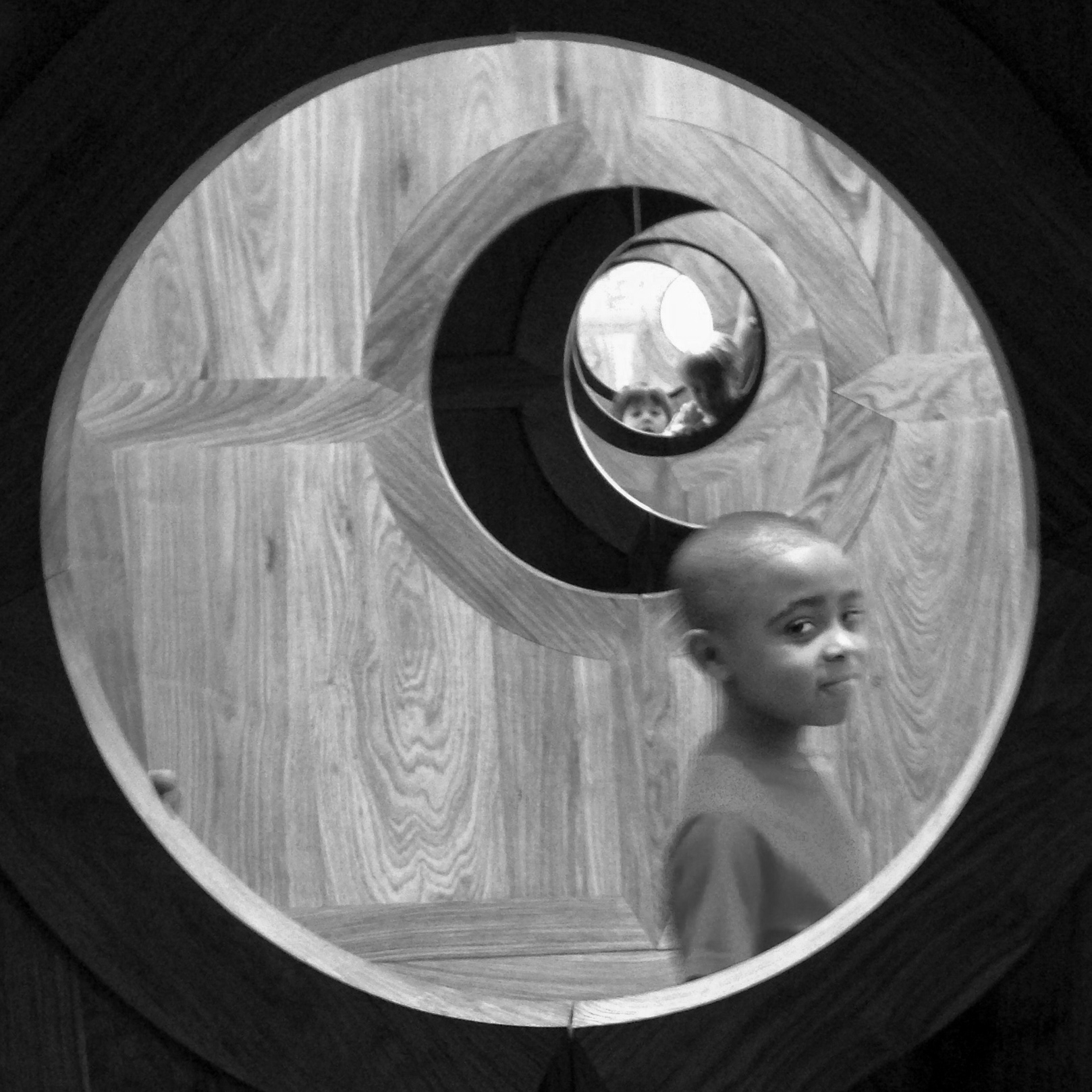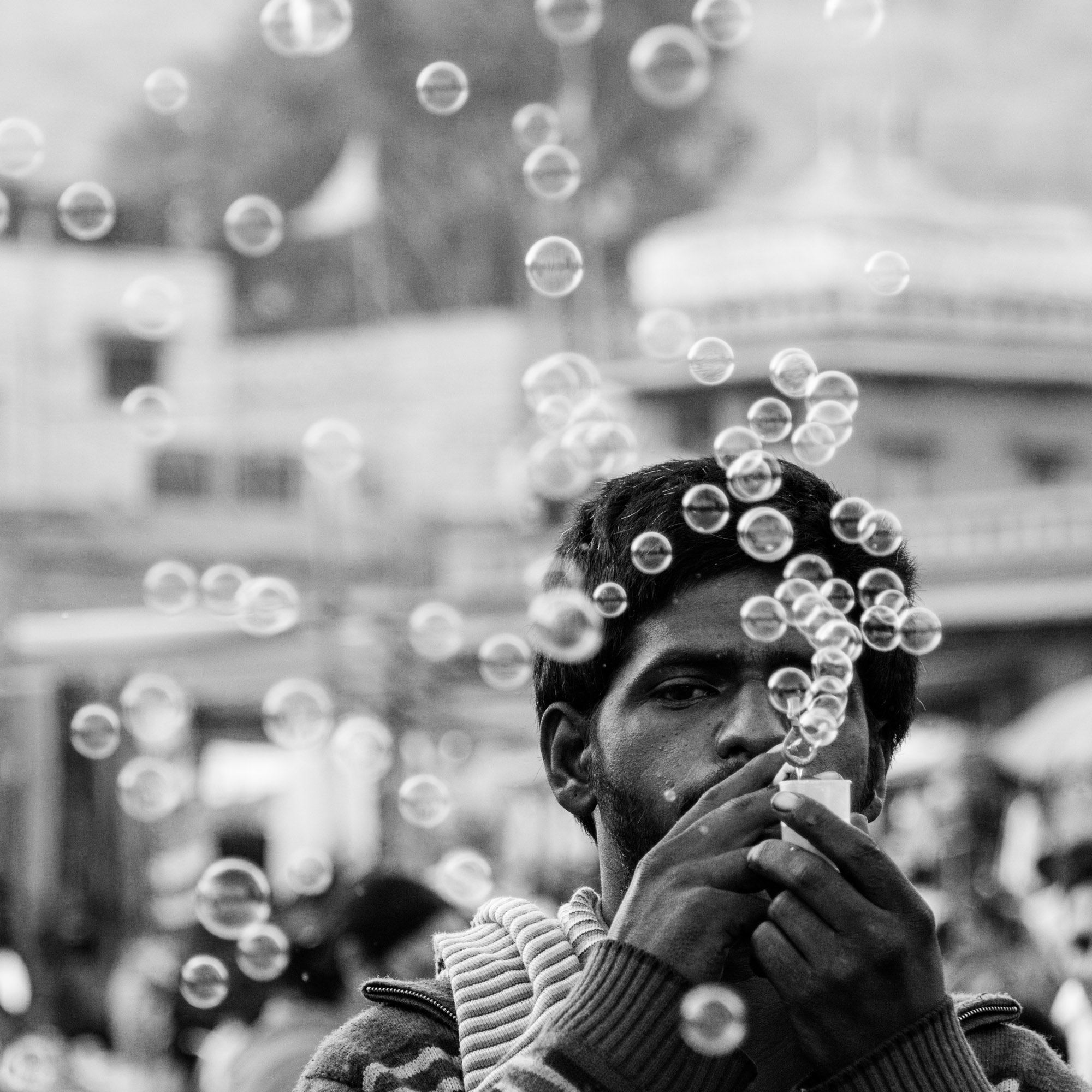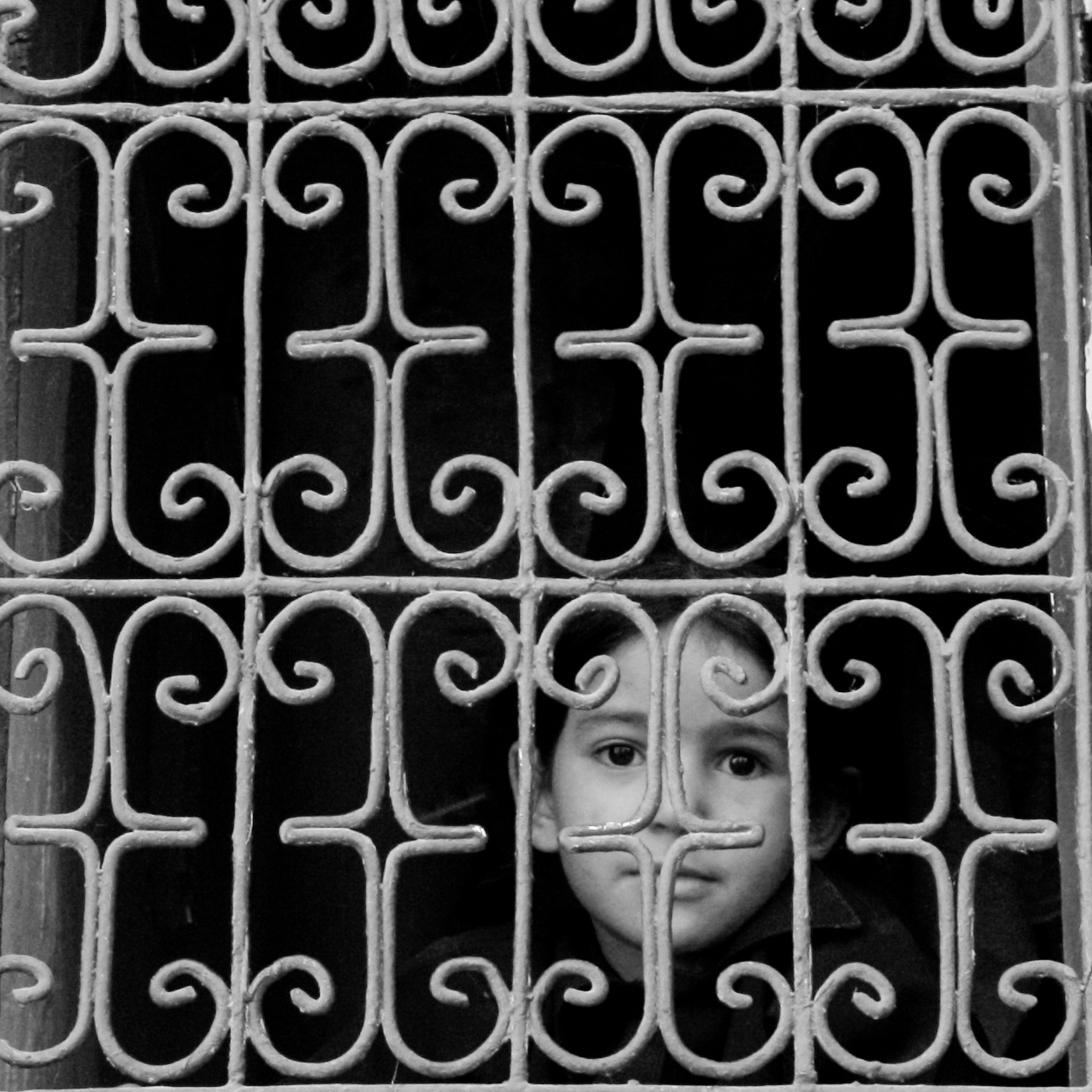Clear Box
Clear Box
Galeria Estação – São Paulo – February and March 2018
CAIXA-CLARA
Paula Braga
To look is to register light. Rays reflected by objects pass through the narrow passage of the pupil and mark the retina. You have the image, but the retina does not maintain it. Closing the eyes, the image disappears. By shifting the pupils in another direction, the light forms a new image on the retina. And whatever the light projects onto the retina is immediately sent to the brain. The retina is capable of fixing the light it receives for a long time, we would see in superimposed layers. This is what happens, quickly, when the light coming from an object is intense: for a few moments, an imprecise mark of that very luminous object remains on the retina even after we shift the pupils to another direction. However, there are layers to the process of seeing the world.
Our visual capture equipment combines with memory to look and imagine at the same time, in a game of building complex and mentally superimposed images.
I look at a chair and imagine beside it, diffusely, the table I saw yesterday. Any scene captured by human vision is permeated by a flow of thoughts and imagery memories.
Looking and just seeing what is projected on the retina is an exceptional situation, perhaps possible for anyone who manages, with extreme concentration, to stop the flow of thought and imagination.
The photographic camera, does not have a brain, is the simplification of the look. The camera only has the equivalent of a retina. Rays pass through the lens aperture and mark the film or paper. However, they definitely mark us. A further entry of light through the aperture will make another image layer on the light-sensitive surface. Therefore, in analog cameras, we rotate the film before the next shot. The camera, therefore, provides us with a representation of the world without overlapping, as if objects exist fixed outside the subject who investigates them. Therefore, for a long time, it was believed that the photographic image could be a neutral record of the world, without any subjectivity, and the name “objective” was given to one of the parts of the camera that allow light to enter.
Undoubtedly, it would be desirable for a technological instrument such as the photography machine to make us know the world objectively, scientifically. Too bad this isn’t possible. In fact, philosophers to this day discuss whether there is a world without a subject. The question is not so complex if the question is about the possibility of representing a world without a subject. Any image is made by one subject and looked at by another. There is no image without subjectivity. Even if the photographer just presses the camera’s shutter, the equipment itself was made by subjects who follow cultural and ideological conventions of world representation (let’s remember the case of kodachrome films, which until the 1970s were not able to capture nuances reflected by the skin black).1
As already argued by Flusser, the camera is a black box that works from an unavoidable programming decision by the programmer. The photographer’s role is, in a work by Sisyphus, to constantly challenge the equipment, including questioning the supposed objectivity of programming.
Using digital technology of image construction and reflective surfaces, Dani Tranchesi explains the subjectivity of image construction. More than images, the objects produced by the artist are clear boxes that challenge the device, mixing the three participants of the love triangle (which is also a triangle of domination) that forms the images of the world: photographer, the photographed and spectator. It is a matter of elaborating the image from the action of the three subjects and the mutual objectification relationships they play.
The series of works developed in the last two years pursue a complex image, which superimposes memory on the spelling of light and explores the role of the photographed and the spectator in the photographic act. The artist’s use of transparent layers to form each image defies the logic of the photographic device by mimicking the process of accumulating mental images on top of the image received on the retina by natural vision. Using an archive of digital photographs produced over the past ten years on her travels through more than sixty countries, Dani Tranchesi accesses old photos as if to conjure up memories. Thus, the photography of buildings in a city with few trees can provoke nostalgia and the memory of the forest, and the result is a third image, which represents the urban landscape concomitantly with the desire for green. On top of this construction, the work receives the image of the spectator, who sees himself reflected in a layer of acrylic or mirror.
Dani Tranchesi’s clear boxes investigate what Phillipe Dubois called an act-image, a type of photography that highlights the living force of an image, “understanding that this ‘act’ is not trivially limited to the gesture of production itself. of the image (the gesture of ‘taking’), but also includes the act of its reception and contemplation. Photography, in short, as inseparable from all its enunciation, as an experience of image, as a totally pragmatic object”.
It is in practice, therefore, that the representation of the world occurs, both in the practice of the photographer, who hunts his object in the “dense forest of culture”,3 and in the practice of the spectator, who is captured in the reflective surface and activates his narcissism to relate to the image, to recognize oneself in what is represented in the photograph.
Whoever observes the movements of a photographer equipped with a device (or a device equipped with a photographer) will be observing hunting movement. The age-old gesture of the Paleolithic hunter who pursues the game in the tundra. With the difference that the photographer does not move in an open prairie, but in the dense forest of culture. His gesture is, therefore, structured by this artificial taiga, and every phenomenology of the photographic gesture must take into account the obstacles against which the gesture collides: reconstituting the condition of the gesture. The jungle consists of cultural objects, therefore of objects that contain certain intentions. Such intentionally produced objects deny the photographer the view of the hunt. And each photographer is closed in his own way. The photographer’s crooked paths aim to circumvent the intentions hidden in the objects. By photographing, he goes against the intentions of his culture. For this reason, photographing is a different gesture, depending on whether it takes place in the jungle of a western city or an underdeveloped city, in a living room or cultivated field. Deciphering photographs would imply, among other things, deciphering the circumvented cultural conditions.4
The object hunted by Dani Tranchesi is not just the one portrayed. She hunts eye games and objectifies relationships with others. Certainly the subject’s degree of objectification is the highest. However, photographer and spectator also objectify each other, to a lesser degree, as they alternate between subject and object of the act-image, just as Narcissus looking at his image in the lake is simultaneously a loving subject and a loved object.
The lake appears in Dani Tranchesi’s works as a mirror, acrylic or image of water. In the Hypothetical Worlds series, the three reflective resources instigate the viewer to pursue their own image. In the transparency of the superimposed layers of cities, forests and beaches, they form a wet image, a puddle inviting for a dip. The acrylic surface reflects the space where the work is installed and the reflection is incorporated into the work: it is essential that the spectator sees himself on the reflective surface, and any doubts he has about whether or not to use this free pass for self-reflection observation will be answered by the small acrylic box containing a mirror, object within the object, gateway for the observer to participate in the liquid scene, merge with the other layers of the image, dissolve in the world, whose representation is only possible if there is the subject who captures it. In Dani Tranchesi’s works, this subject is also represented in the reflection. It is, therefore, subject and object simultaneously.
In the large color photos of faces, pierced by black and white eyes, the photographer explores the theme of Eurocentric documentary photography that investigates so-called exotic cultures. In the dense forest of Western culture, this genre of portrait is valued as a possibility of knowing the other. However, in the hunt for relations of image domination, Dani Tranchesi’s photos expose the exotic portrait as the apex of the objectification of the photographed by replacing the model’s eyes with the eyes of the beholder, sometimes the photographer’s eyes.
Perhaps the most famous portrait of the genre in the history of photography is Steve McCurry’s 1985 image of the Afghan girl for the cover of National Geographic. As much as the girl’s large green eyes stare at the photographer and the viewer as if they could paralyze them, and thus can give the portrayed a defense force against Western voyeurism, McCurry’s camera is the Medusa that froze the girl in a fixed state.5 The photographer “takes” a photograph, a verb that is consistent with the belief of some cultures, as in the case of the Brazilian Yanomami, that the sick should not be photographed because the photo “takes” their vital force. In fact, when the camera sucks the light that the photographed person reflects and records it in a fixed way, it transforms it into an object and removes all other possibilities, all the “becoming” that are potentially in the subject and that are denied him in the fixity of the photograph.
The explanation of the passage from subject to object is the subject of investigation of this series by Tranchesi. Whoever the subject in the red turban is has become an object reproduced in the background, in one of the layers of the background. On the surface of the image, what we see is the photograph’s performativity and its paralyzing power, with an emphasis on the photographer’s Medusa eyes on the top layer of the image. In the series of acrylic boxes, the subject is dissected into slides, separated into parts, including the fundamental element of the generating act of the image under analysis: the slide with the photographer’s eyes. Hanging from the ceiling, the acrylic boxes show the portrait of an inhabitant of a distant country on one side and the act-image on the other. On one side, the portrayed frozen and on the other, the freezing gaze.
In the Black Mirrors series, the photographer appears full-length, with the camera in her hand, hidden between the various layers of the image. The viewer has to hunt her down in the pile of transparencies. By offering herself as prey, the photographer’s action takes on a softness that removes the hardness of Medusa’s gaze. It disguises itself in the jungle of cultural objects to circumvent the obstacles imposed on the hunt for an image not foreseen by the programming of the device. But who is the one portrayed in the black mirrors? That’s the point, because even though the various layers show people, the camera points to the viewer.
As in the famous painting Las Meninas, by Velázquez, in which the painter appears behind a large canvas, in the Black Mirrors series the artist stands behind her instrument of reproduction of the world and looks at those who are outside the work, a hidden subject. Velázquez appears reflected in the mirror at the back of the room and is observed by the girls: the king and the queen. In Dani Tranchesi’s composition, the camera’s focus is the spectator. It is interesting that in some pieces of this series “the girls” are not looking out. In Basin with a Mirror, the girl looks at the black acrylic rectangle pasted on top of the image, which will necessarily reflect the viewer. In The Closet, the Indian man’s loving gaze is directed towards the photographer, who, in turn, looks at anyone who is out of the scene. To enter the list of shuffled papers, the spectator just needs to position himself so as to appear in the vertical black mirror in the left corner of the composition.
Black Mirror is also a reference to cell phone screens that opened the selfie chapter in the history of photography. Never have people portrayed themselves so much or in such a narcissistic way. Reproducing oneself in an image and circulating it on social networks as if we were desirable products alleviates the anguish of being a subject and therefore responsible for the action. Much more comfortable is being a smiling object produced and distributed by cell phone. Dani Tranchesi’s black mirrors explore the idea of the selfie with rare dignity, inviting the viewer to reproduce themselves in image to interact with the layers of the composition. The ephemeral selfie appears on the reflective surface of the black acrylic and joins for a few moments the images from the artist’s photographic memories, equating herself with the Indian man, the balloon girl, the old Chinese woman who cooks in front of a mirror.
In Galaxies, characters archived over the years by Medusa’s gaze are superimposed on a mirror. The viewer appears as the back layer. As much as he wants to be the observing subject, he is only in the background, and he has to look behind the barriers, look through the gaps in the bars, dodge the soap bubbles, if he wants to be an object. And even then it will be the product of interaction with the other stars in the galaxy. To see himself in the mirror, the observer will have to dribble obstacles, also look at the other, look for himself in the dense forest of cultural codes, and understand himself in integration with the world. And to realize that, just as there is no worldview separate from the memory and thought of the beholder, there is no observer separate from the world.
Grades
1 SMITH, David. “’Racism’ of early color photography explored in art exhibition”, Jan. 2013. Available at <https://www.theguardian.com/
2 DUBOIS, Philippe. The photographic act. Campinas: Papirus, 2012, p. 15.
3 FLUSSER, Vilém. Black box philosophy. São Paulo: Hucitec, 1985, p. 18.4 Ibid.
5 DUBOIS, op. cit., p. 146.
